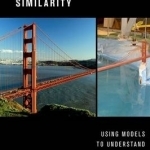Simulation and Similarity: Using Models to Understand the World
BookThis item doesn’t have any media yet
2015 | Computing & IT
In the 1950s, John Reber convinced many Californians that the best way to solve the state's water shortage problem was to dam up the San Francisco Bay. Against massive political pressure, Reber's opponents persuaded lawmakers that doing so would lead to disaster. They did this not by empirical measurement alone, but also through the construction of a model. Simulation and Similarity explains why this was a good strategy while simultaneously providing an account of modeling and idealization in modern scientific practice. Michael Weisberg focuses on concrete, mathematical, and computational models in his consideration of the nature of models, the practice of modeling, and nature of the relationship between models and real-world phenomena. In addition to a careful analysis of physical, computational, and mathematical models, Simulation and Similarity offers a novel account of the model/world relationship. Breaking with the dominant tradition, which favors the analysis of this relation through logical notions such as isomorphism, Weisberg instead presents a similarity-based account called weighted feature matching.
This account is developed with an eye to understanding how modeling is actually practiced. Consequently, it takes into account the ways in which scientists' theoretical goals shape both the applications and the analyses of their models.
Related Items:
| Published by | Oxford University Press Inc |
| Edition | Unknown |
| ISBN | 9780190265120 |
| Language | N/A |
Images And Data Courtesy Of: Oxford University Press Inc.
This content (including text, images, videos and other media) is published and used in accordance
with Fair Use.
